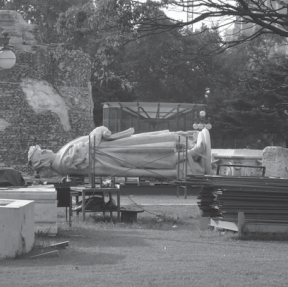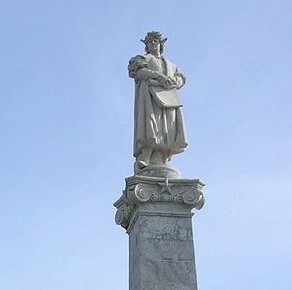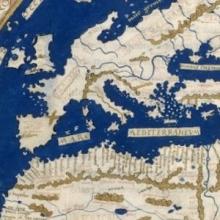South America

Mausoleum of José de San Martín
In 1816, after more than two centuries of Spanish rule, the nation of Argentina declared its independence. One of the leaders of the independence movement was José Francisco de San Martín y Matorras, more commonly known as General San Martín. He fought in battles in Argentina, Peru, and Chile.

Legislative Palace of Uruguay
The Legislative Palace of Montevideo, Uruguay, was built in the early twentieth century. Construction lasted from 1904 to 1925 under the supervision of Vittorio Meano and Gaetano Moretti. It is located in the Aguada barrio, or neighborhood, of the city.

Cast of the Hand of Brazilian Emperor Pedro II
Brazilian Emperor Pedro II ruled from 1831 – 1889. He was the last emperor in power before Brazil became a republic. This image captures two bronze hand molds taken of Pedro II’s right hand in the early nineteenth century.
Ark (Wooden Chest with Iron Locks)
This heavy wooden chest served a crucial purpose for municipal officials of Buenos Aires in the eighteenth century: it stored their documents. Until the early nineteenth century, the Spanish Crown ruled over much of South America, including Buenos Aires.

Fourteenth-Century Chinese Dragon
This Chinese animal figure belongs to the rich collections of the Museo Nacional de Arte Decorativo in Buenos Aires. Depicting a dragon, the piece dates back to the fourteenth century.

America Invertida (Inverted America)
We generally expect maps to convey the location of oceans and land masses accurately. But why do almost all maps and globes position North at the top and South at the bottom, when there is no up or down orientation of the universe?

Short Teaching Module: Controversial Historical Monuments
I use images of three historical statues that triggered controversy beginning in the 2010s to teach about the concept of contested historical memory and to have students consider parallels and differences among public history controversies in different parts of the world.

Christopher Columbus monument removal, Buenos Aires, Argentina
The Monument to Christopher Columbus (1451?-1506), located in a plaza in front of the Casa Rosada government palace, was inaugurated in 1921.

Christopher Columbus monument, Buenos Aires, Argentina
The Monument to Christopher Columbus (1451?-1506), located in a plaza in front of the Casa Rosada government palace, was inaugurated in 1921.

Short Teaching Module: European Maps of the Early Modern World
I use images of three historical maps for topics on colonial exploration and for interpreting historical evidence in undergraduate courses on history and historical methodology. I have several aims in using the maps.